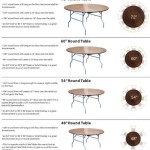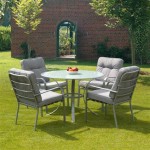How to Make a Table Flower Arrangement
A table flower arrangement can elevate the ambiance of any space, adding a touch of elegance and sophistication. Whether it's for a formal dinner party, a casual gathering, or simply to brighten up your living room, creating a beautiful arrangement is a rewarding endeavor. This article will guide you through the process of crafting an eye-catching table centerpiece, covering essential elements and offering helpful tips along the way.
Choosing the Right Flowers and Container
The first step in creating a table flower arrangement is selecting appropriate flowers and a suitable container. The choice of flowers should align with the occasion and personal preference. Consider factors such as color scheme, seasonality, and the overall aesthetic you wish to achieve. For a formal event, classic choices like roses, lilies, or orchids are often preferred. For a more casual gathering, wildflowers, sunflowers, or daisies can add a vibrant touch.
The container plays a crucial role in framing the arrangement. The size and shape of the container will influence the scale and design of the arrangement. A tall, narrow vase will create a vertical emphasis, while a wide, shallow bowl will lend itself to a more sprawling design. Consider the overall style and proportions of the container in relation to the table and the flowers.
Creating a Balanced and Harmonious Arrangement
Once you have chosen your flowers and container, it's time to start arranging them. The goal is to create a balanced and harmonious composition that is both visually pleasing and structurally sound. There are various techniques and styles to consider, but the fundamental principles remain the same:
Focal Point: Establish a focal point in the arrangement, which is typically the largest or most prominent flower. Position it at the center or slightly off-center to create visual interest.
Variety and Texture: Include a range of flowers with different shapes, sizes, and textures. This will add depth and dimension to the arrangement. For instance, combine round blooms with long, slender stems, or soft petals with spiky foliage.
Color Harmony: Consider the color palette of the flowers and container. Opt for a cohesive color scheme that complements the overall aesthetic. Monochromatic arrangements, using different shades of the same color, create a sense of calm and sophistication. Complementary colors, such as blue and orange, offer a vibrant and energetic contrast.
Height and Balance: Distribute the flowers at varying heights, ensuring a balanced and pleasing silhouette. Avoid creating a top-heavy arrangement that may be prone to tipping over.
Finishing Touches and Care
Once the arrangement is complete, add finishing touches to enhance its visual appeal. Consider incorporating foliage, branches, or decorative elements to create texture and visual interest. Trim the stems at an angle to facilitate water absorption and ensure the flowers remain healthy and vibrant.
To maintain the longevity of the arrangement, provide proper care. Change the water every few days and add flower food to nourish the blooms. Keep the arrangement away from direct sunlight and heat, which can cause wilting and fading. A well-maintained table flower arrangement can add a touch of beauty to your home or event for several days.

How To Make A Table Centre Flower Arrangement Floristry Arranging No Fl Foam

How To Make A Centerpiece In 5 Minutes Blooms By The Box

Table Top Garden Arrangement Tutorial My Mayberry Lane

How To Make A Long Flower Arrangement For Dining Table

How To Make A Lush Posy Table Arrangement Like Florist Happy Home Clinic

Table Top Garden Arrangement Tutorial My Mayberry Lane

How To Make Flowers Spring Out Of A Table

How To Create A Stunning Long And Low Table Arrangement Step By Guide With Roses Hydrangea

How To Create Real And Faux Fall Flower Arrangements My 100 Year Old Home

How To Make A Head Table Wedding Flower Arrangement








